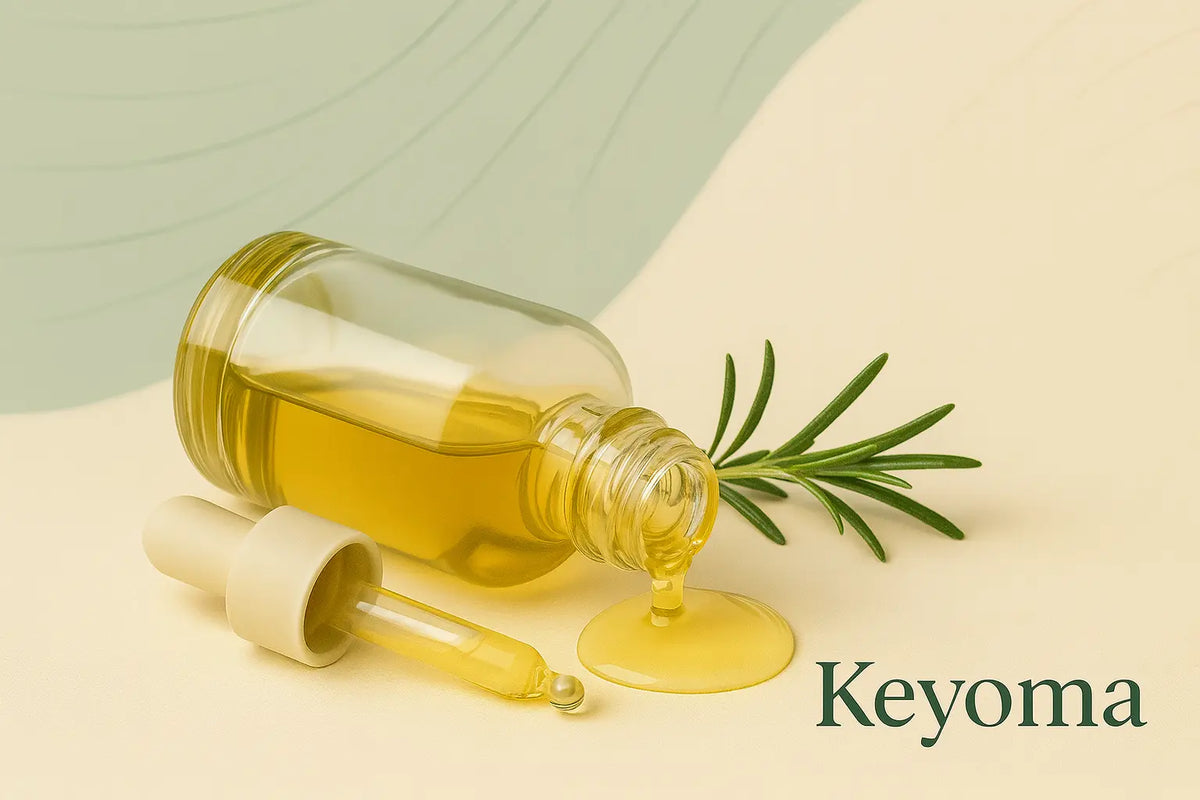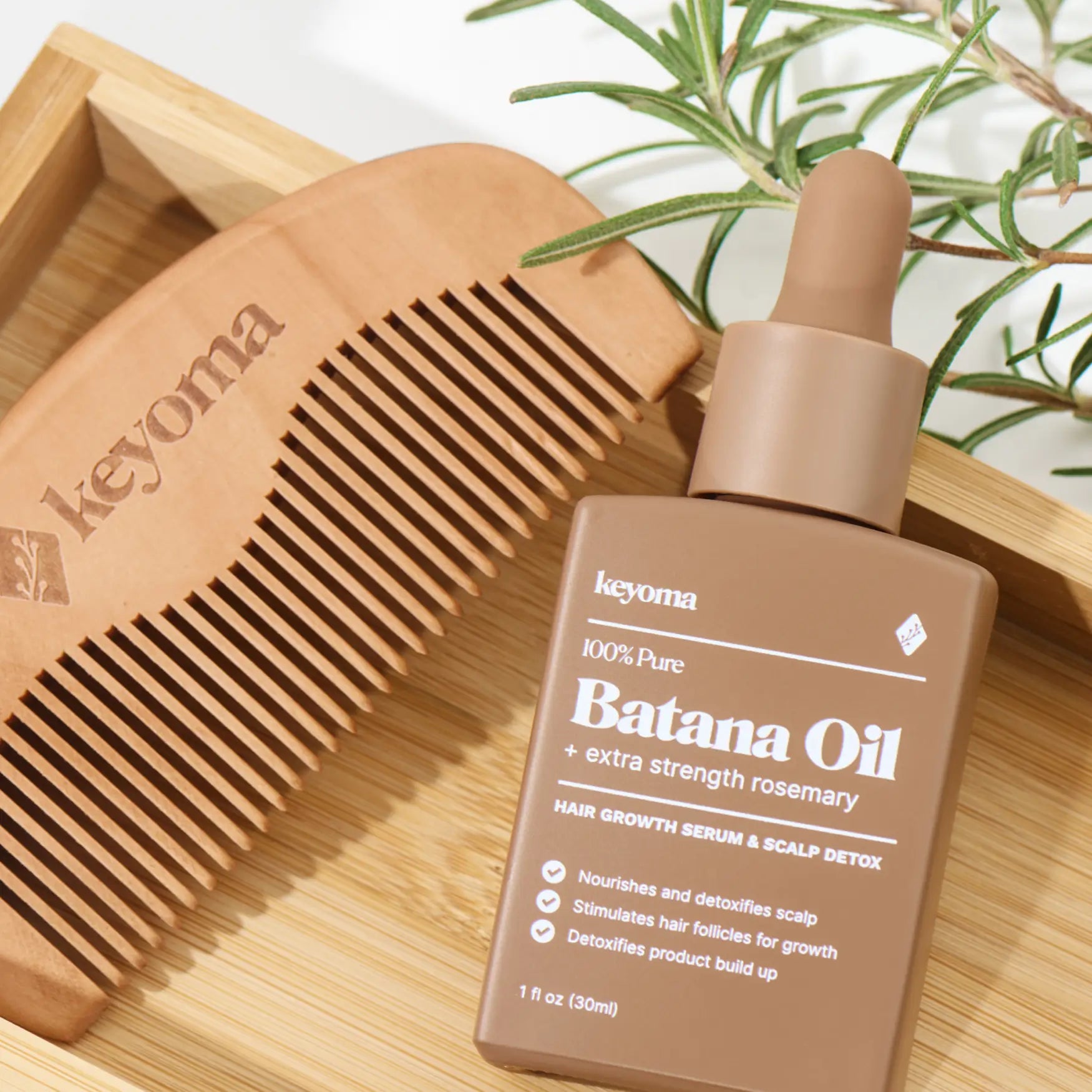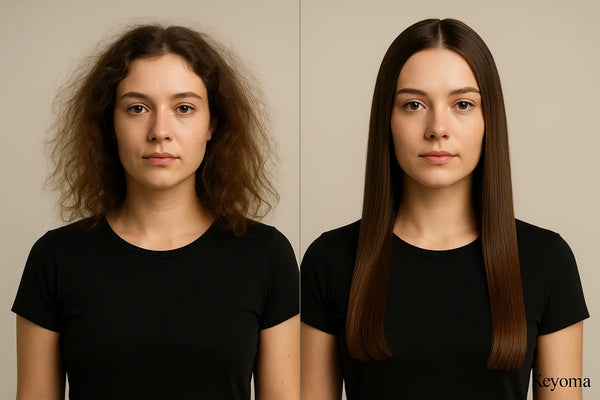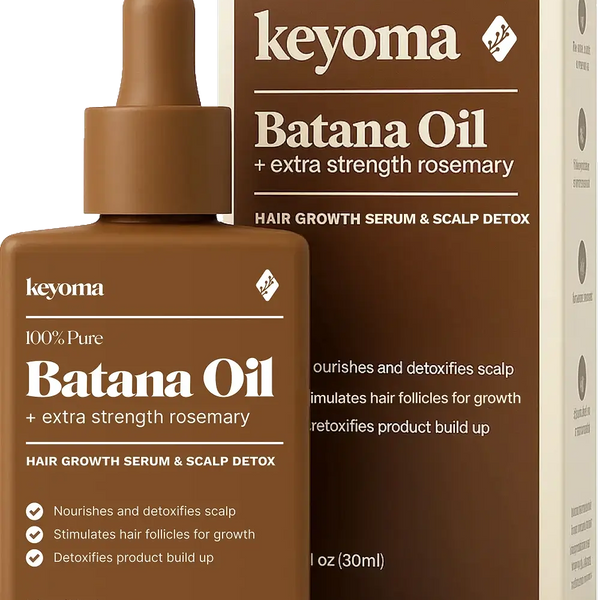Last updated
Aug 13, 2025
Side Effects of Hair Oiling: Explaining the Facts & Myths
Published on
Aug 13, 2025

In this article
Hair oiling has long been praised for its benefits, with experts and everyday users alike sharing stories of shinier, fuller hair. As with most things, there is another side—skeptics and those whose past experiences went wrong, many of whom point to the possible side effects of hair oiling.
This leaves us with the question: which side effects are real, and which are not?
In this guide, we set out to clear the air, looking at what is true and what is exaggerated so you can make informed decisions about your own hair oiling routine.
Key Takeaways
-
Most problems come from overuse or poor application of hair oil, not from the oil itself
-
The scalp changes over time, and even small adjustments in how much oil you use, when you apply it, and where you place it can make a big difference.
-
Knowing your own scalp and hair type is important for keeping oiling safe and helpful.
What are the Side Effects of Hair Oiling (and Facts Behind Each One)
Itch, Burning, or Redness
Actual Cause:
Irritation, burning, or redness can appear when too much oil is applied. This is also often the case when using pure essential oils like tea tree, peppermint, and clove oils.
When more oil is applied than necessary, it creates a dense layer that traps heat, sweat, and debris, resulting in clogged pores. This warm, occluded environment encourages microbial growth, which can contribute to redness, itching, and other side effects tied to allergic or irritant reactions.
What to Do:
To address this, use only the amount of oil your hair and scalp can comfortably absorb, focusing on mid‑lengths and ends rather than saturating the roots.
While excess oil is often the main cause, there are several other common culprits to be aware of.
-
Undiluted potent essential oils: Concentrated plant extracts can cause burns or irritation when applied directly. Always dilute essential oils to a safe concentration by mixing them with a suitable carrier oil. Apply patch tests as well before full application.
-
Expired oils: Oxidation changes the oil’s chemical structure, which can irritate the scalp or cause allergic reactions. Store oils in dark, airtight containers away from heat and light, check expiry dates, and discard any oil that smells rancid or has changed in texture.
-
Pre‑existing scalp conditions: Skin conditions such as eczema or psoriasis leave the scalp more prone to inflammation and irritation. When present, it’s best to consult a dermatologist or qualified healthcare professional for personalized guidance before applying any oils.
Flaking or “Dandruff‑like” Scale
Actual Cause:
Regular scalp oiling without thorough washing can sometimes worsen seborrheic dermatitis—a condition that develops when Malassezia yeast, a natural inhabitant of the scalp, grows excessively.
The combination of oil, warmth, and natural scalp moisture creates a perfect environment for Malassezia to multiply. As the yeast population grows, the scalp responds with irritation and shedding of skin cells, which appear as dandruff-like flakes.
What to Do:
Limit oiling to short pre-wash treatments, just enough to nourish the hair without leaving excess oil behind. Wash the scalp thoroughly after each session.
If you have an oily scalp, we recommend spacing out your oiling sessions to give your scalp time to regulate its natural oils and maintain volume.
Hairline, Forehead, or Back Acne
Actual Cause:
When oil spreads beyond the scalp and coats the skin along the hairline, forehead, or upper back, it can combine with sweat and dead skin cells. This clogs pores, traps bacteria, and triggers inflammation, all too often resulting in acne.
At times, product buildup can progress to a more serious condition called folliculitis—an inflammation of the hair follicles that causes redness, swelling, and tenderness.
What to Do:
Apply oil starting from around ear level downward to keep it away from the skin near the hairline. Wipe away any excess immediately, and change pillowcases often to avoid reintroducing oils to the skin.
If you’re prone to body or facial acne, keep oiling sessions short and tie your hair back during treatment to minimize skin contact.
Greasy, Limp Hair
Actual Cause:
When oil goes directly on the roots or exceeds what your hair can absorb, it can overload strands with weight and pull them downward. This leaves you with an extra greasy scalp and a flat hair.
This excess oil fills the natural gaps between strands. The result? Hair clumps together, loses its natural bounce, and appears to have less volume.
What to Do:
This side effect usually points to just one cause—over-oiling issues. Apply only a small amount. Better yet, start with a light layer and add more only if needed.
Tangling, Matting, or Breakage
Actual Cause:
Going to bed with hair soaked in oil is problematic mainly because the excess oil creates a sticky coating that causes strands to tangle and knot. This constant tug at the roots throughout the night strains the follicles and—if that weren’t enough—leaves your pillow or bedding greasy and messy.
What to Do:
Detangle hair gently before applying a light layer of oil, and keep any overnight style loose to prevent pulling. Satin or silk pillowcases can also help by reducing friction and minimizing tangles.
If you have fine, fragile, or chemically treated hair, know that you're more vulnerable to this type of damage. Consider skipping overnight oiling altogether and opting for pre‑wash treatments instead.
Other culprits can also make tangling, matting, or breakage worse. These include.
-
Tight hairstyles during the day: Tight ponytails, braids, or buns can weaken your hair follicles and make them more susceptible to breakage. Rotate them with much looser hairstyles to ease the tension on the follicles.
-
Using heavy oils too often: Using thick carrier oils like castor or coconut too often leaves a sticky coating between strands, which can lead to tangling and matting. Switch to a lighter oil blend—such as rosemary mixed with batana—or use naturally lighter oils like argan or jojoba for overnight treatments.
-
Excessive scalp massage: Too much pressure during a scalp massage can cause hair breakage and stress the follicles. Use gentle, circular motions instead.
Scalp Burning
Actual Cause:
If you’re fond of hot oil treatments, heating the oil too much can irritate the scalp. When the temperature rises beyond what the scalp’s skin can tolerate, it can, in sensitive individuals, trigger contact dermatitis—a skin inflammation that occurs when the scalp reacts to an irritating substance.
The risk of scalp burning increases if it's protective barrier is already weakened from prior dryness or treatments.
What to Do:
Warm the oil gently, using indirect heat methods such as placing the container in warm water. Test the temperature with your fingers before applying to avoid burns, and steer clear of prolonged heat directly on the scalp.
If you have sensitive skin, a recent sunburn, or any scalp condition, avoid heated oils entirely and stick to using them at room temperature to reduce the risk of irritation.
Scalp Odor
Actual Cause:
Failing to wash the scalp well or leaving oil on it for too long can cause several problems we discussed earlier, but one of the most noticeable is scalp odor—often a sour or musty smell.
This tends to happen if you work out regularly or spend time in humid weather, when sweat mixes with excess oil. Natural bacteria and yeast on the scalp feed on this mixture, breaking down the oil and sweat and releasing byproducts that create the unpleasant scent
What to Do:
Plan oiling sessions for times when you can wash your hair within a few hours, rather than leaving the oil on indefinitely. Avoid heavy oiling on days you expect to sweat.
“Hidden” Causes Behind These Side Effects
From what we’ve talked about so far, you can see that it’s not inherently hair oiling that’s the problem, nor is it the type of oil. In fact, these symptoms can occur even without using hair oil at all. The real issue often lies in habits or health conditions we may not even realize we have.
Some of the common triggers include:
-
Poor scalp hygiene: Not washing the hair often or thoroughly enough can lead to excess oil build up. These habits trap oils, sweat, and debris on the scalp, leading to odor, itch, or dandruff‑like flakes.
-
Harsh hair accessories: Tight elastics or clips may worsen breakage and traction alopecia.
-
Unbalanced diet: Nutritional deficiencies, particularly in protein, omega fats, iron, zinc, vitamin D, and B‑vitamins, can weaken scalp health and reduce its ability to stay resilient. This makes irritation, extra hair fall, or dull-looking strands more likely.
-
Chronic stress: Stress raises cortisol levels, which can trigger inflammation and make reactions like redness or excess hair fall more intense.
-
Skipping regular pillowcase changes: This can lead to acne or folliculitis as it transfers oils, sweat, and bacteria back onto the skin.
Frequently Asked Questions (FAQs)
Is oiling actually good for your hair?
It can be, when matched to your hair and scalp needs. https://keyomahealth.com/collections/best-hair-growth-oils-for-thinning-hair In fact, research and traditional use suggest that the right oils can reduce protein loss, make hair easier to style and control, and protect strands from wear.
Which oil to avoid for hair?
Avoid essential oils such as clove, peppermint, or tea tree, as they can irritate sensitive scalps if applied without dilution. Also steer clear of any oils that cause irritation or discomfort on your scalp or skin, which you can identify through a simple patch test.
Is oiling hair too often bad?
Yes, if “too often” means the scalp never has a chance to rebalance or breathe. Thick, coarse, or very dry hair may tolerate more frequent oiling, while fine, oily, or dandruff-prone hair usually benefits from less frequent sessions.
When should I not oil my hair?
Skip oiling when you have an active scalp infection, open sores, or inflammatory flare-ups like eczema or psoriasis. Also avoid it if you’ll be exposed to excessive heat or dust soon after, as oil can trap irritants against the skin.
Start Your Hair Oil Journey Right
Hair oils can be safe, effective, and worth adding to your routine. Many people use them every day with great results, but even a few times a week or every other day can make a difference. What matters most is finding the right oil for your hair and knowing the habits and techniques that make it work best.
Discover more tips, step‑by‑step guides, and in‑depth advice on the Keyoma blog to help you get the best results from your hair oiling routine.
Featured Product
100% Pure Batana Oil + Rosemary
Learn more about Batana Oil
Your Cart
Your Cart is empty
Let's fix that
You might like...
Search our store








